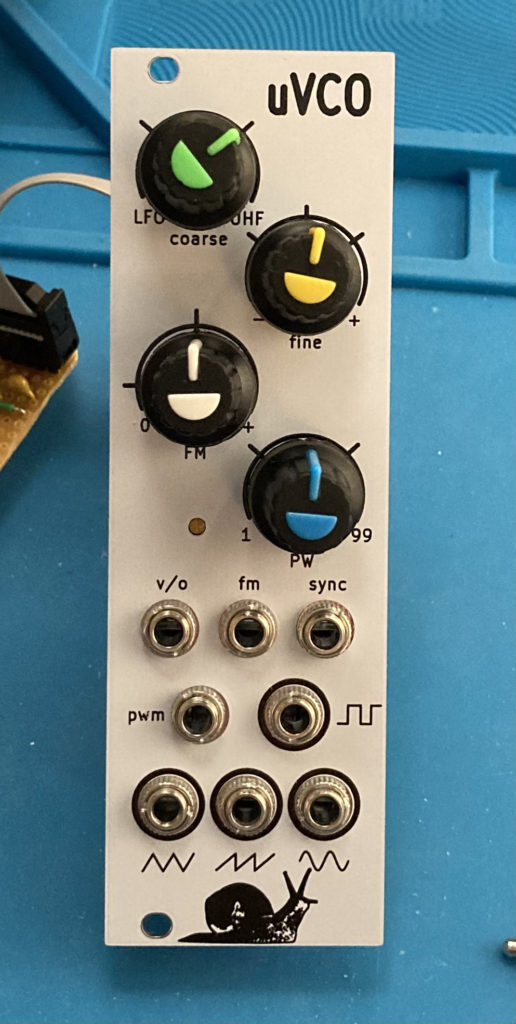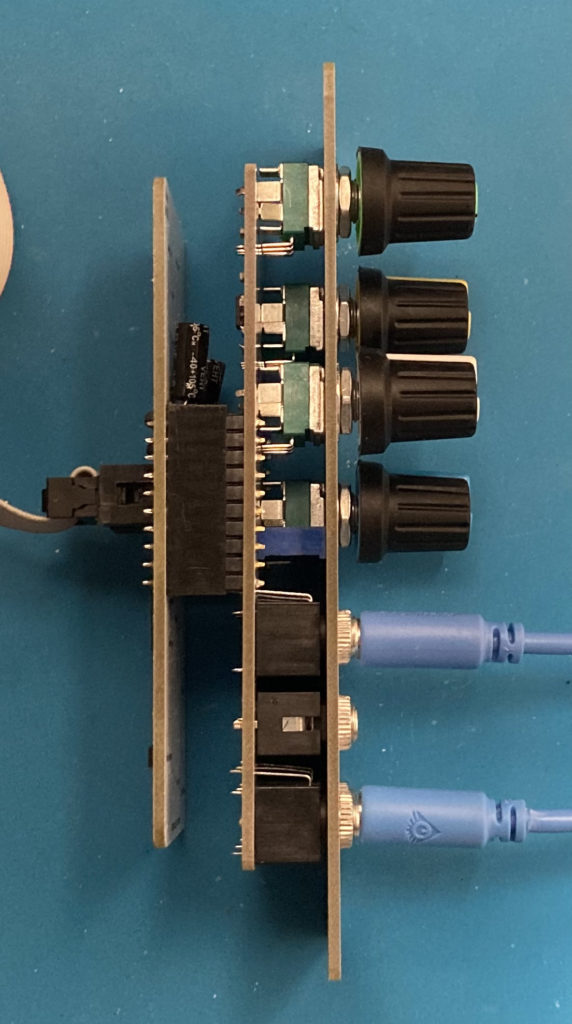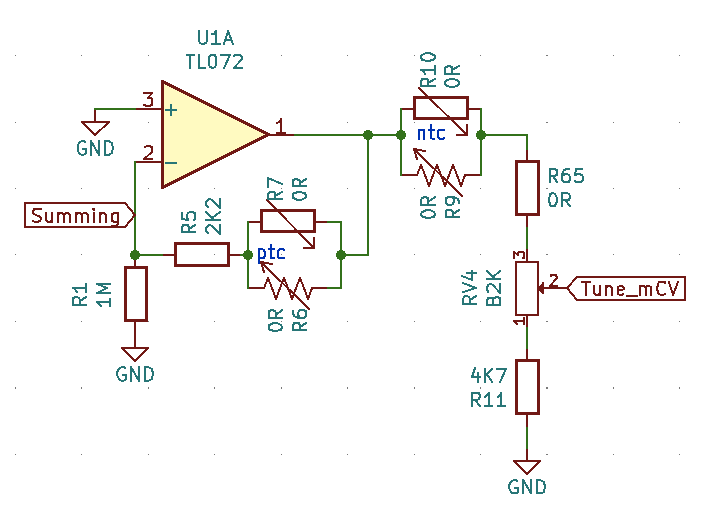the Utility VCO is a standard sound source, and/or low frequency oscillator. 8HP wide, 35mm deep.
It’s a saw-core oscillator with a triangle converter, a sine converter and a square-wave too. The square has pulse width control and CV input. Saw-core was the best way I could implement hard sync. When the sync input goes high, all waveforms hit their minimum; this was implemented to function as a reset when in LFO mode. The coarse tune runs all the way from 0.1 Hz to over 15 kHz. The trimpot visible on the face is for calibrating volts per octave, and it should be stable across ten octaves.
We’ve got analog temperature compensation through either an NTC or a PTC resistor, whichever you have available.


Build Guide & BOM for v1.1
Build guide pre-release bill of materials outdated
| item | Price | Note |
| PCB & Panel set | $30 | |
| Full parts kit (incl pcbs) | $100 | limited availability |
| Built & Tested | $150 |
Analog oscillators are sensitive to the ambient temperature, and often have temperature compensation circuits. The Karltron uVCO is designed to support several schemes of temperature compensation because the specialized parts are sometimes hard to find. There’s a spot for a PTC resistor if you have one of those, or an NTC resistor if you have one of those, or it could be built with no compensation and tuning that needs recalibration with the season.
Power draw was measured at 40 mA on -12V and 50 mA on +12V, with no 5V usage. Internal 5V references are generated with zener diodes to provide a stable frequency throughout power supply noise.
The saw core uses two JFETs to reset, and those can be hard to source in SOT23, so I’ve tested both a J112 and a J309 both seem to work well.
The v1.0 boards have the NTC tempco in the wrong spot, so only the PTC tempco is functional, or go without temperature compensation. The transistors seem to go about half a note sharp per octave when the ambient increases 10 degrees C. With a PTC KTY81 sensor installed, this circuit is still in tune, within one one hundredth of a note per octave after a 10 degree shift. It also achieves such performance with an NTC thermistor installed in a place to be available on the v1.1 circuit boards.
